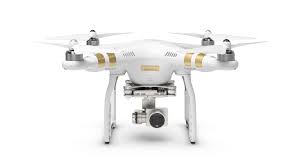
“The biggest obstacle in drone regulation in Europe is that there is no harmonisation between the countries. People bring our products on holiday with them, when they go skiing in the Alps for example, but they need to know about temporary flight restrictions,” Christian Struwe, DJI’s European policy representative, told IBTimes UK.
DJI has long been an advocate for technology solutions – as opposed to further regulations – to drone safety issues. The DJI geofencing technology – GEO – allows drone pilots to receive no-fly and temporary flight restriction information in real time, helping responsible drone operators to follow the rules and avoid conflicts. While some pilots have complained that the geofencing solution doesn’t allow for enough flexibility – overriding the restriction requires account verification with DJI – it does avoid the issue of recreational operators accidentally interfering with other aircraft or flying in restricted airspace.
The solution, however, is only as good as the data. “We need centralised servers delivering all the no-fly zone data to us that everyone can access for the whole of Europe. Neither our partners or competitors currently have the data for their geofencing solutions either,” Struwe told IBTimes.
Regulators have struggled with the issue of drones flying near airports and in restricted airspace, with a spate of recent reports – many of which have been unconfirmed – of near collisions fueling the political drive to ensure airspace safety. Heavier penalties, stricter regulations, and anti-drone technologies have all been proposed. But while regulations already exist prohibiting drone flight near airports, drone operators are sometimes unaware or careless of existing laws. Technology solutions to the problem could eliminate the need for greater enforcement efforts; but they require an investment from regulators to clarify regional restrictions.
Miriam McNabb is the Editor-in-Chief of DRONELIFE and CEO of JobForDrones, a professional drone services marketplace, and a fascinated observer of the emerging drone industry and the regulatory environment for drones. Miriam has penned over 3,000 articles focused on the commercial drone space and is an international speaker and recognized figure in the industry. Miriam has a degree from the University of Chicago and over 20 years of experience in high tech sales and marketing for new technologies.
For drone industry consulting or writing, Email Miriam.
TWITTER:@spaldingbarker
Subscribe to DroneLife here.
